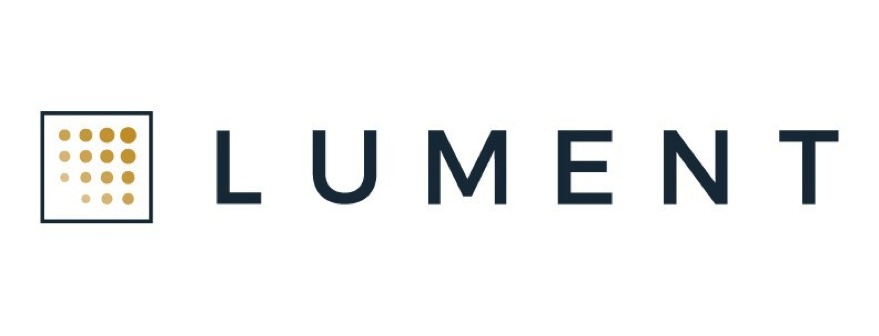
Key Takeaways
- Middle-income households experienced the most significant increases in rent burden since the pandemic. The rents for workforce and mid-range apartments that cater to middle-income renters increased nearly twice as fast as wages and personal income during 2021 and 2022.
- A persistent supply shortfall was largely responsible for this situation.
- Recently, governments, private investors, developers, and lenders have leveraged a variety of methods to increase the supply of workforce housing without reliance on federal subsidies.
- Although the middle-income housing deficit is substantial and years in the making, these approaches to the problem provide a road map to a more balanced rental housing market.
Household rent burdens increased in every segment of the multifamily market in 2022, but no group felt the squeeze of rising costs more than middle-income households. The “Missing Middle” (defined as households earning between 60% and 120% of the area median income) earn too much to benefit from traditional affordable housing programs but not enough to afford more readily available luxury apartments.[i]
Indeed, housing affordability for middle-income renters plummeted during the past two years. In the 24 months ended December 2022, rents for class C and B apartments rose by 20.1%, roughly twice the increase in the average hourly wage (10.4%) and personal income per capita (11.3%), adding meaningfully to the percentage of moderate- and middle-income renter households paying more than 30% of household income in rent and utilities.
Stock of Attainable Rental Housing Lags Demand
The rising rent burdens of America’s working families are attributable to a host of reasons, but none is a greater factor than a chronic shortfall of new middle-income housing. Although multifamily construction is proceeding at the fastest pace since the 1980s, the bulk of properties in the pipeline is targeted toward higher-income households or, to a much lesser degree, renters qualifying for housing subsidies or restricted rents.
Without tax credits or subsidies of some kind, developers find it difficult to make middle-income project numbers work. As a result, only 4% of the 1.325 million market rate units added to primary and secondary market inventories since 2018 are rated below grade B+, according to commercial real estate data provider Yardi Matrix. By contrast, Yardi describes nearly 50% of its coverage universe as lower mid-range and workforce housing. Much of the workforce housing activity it tracked was limited to value-add transactions. While value-add renovations improved the quality of the middle-income stock, they did not address the supply problem or reduce cost burdens. In fact, many of those value-add renovations resulted in even larger rent increases at those properties.
Rising to the challenge, developers, investors, communities, and lenders are developing replicable models that can create new attainable housing without direct government subsidies, and lenders are offering new incentives to conventional sponsors prepared to restrict rents for missing middle renters.
State and Municipal Programs
The shortage of attainable housing is more than a burden on working families, it also hinders municipalities seeking to recruit essential workers like teachers, first responders, and healthcare professionals and is cause for businesses to locate, start in, or move to lower-cost markets. Consequently, an increasing number of states, cities, and community organizations are working to develop public/private partnerships to bring more housing to market that is affordable to the workforce and deed-restricted to ensure that it will remain affordable for decades to come.
At the local level, municipalities are extending real estate tax exemptions and waiving density limits to encourage workforce housing construction. States have also begun to provide financial incentives to build or set aside more attainable units. For example, the Michigan State Housing Development Authority recently launched a program providing grants to middle-income housing developers. The Missing Middle Housing Program will employ $50 million of unused American Rescue Plan (ARP) funds to boost housing for households with incomes as high as 300% of federal poverty guidelines. Massachusetts has operated a $100 million fund of this nature since 2016, with a cap of $100,000 of debt per unit, and Rhode Island recently introduced a similar program financed with $20 million of unallocated ARP funds that will provide sponsors with up to $80,000 of soft dollar debt per unit. It is likely that programs like these will become more common as the need is more widely appreciated and more jurisdictions leverage available ARP funds.
Essential Function and Other Types of Tax-Exempt Bonds
Various public sector groups in California are creating government entities and partnering with for-profit operators to use tax-exempt bonds that can be issued for such purposes (while preserving private activity bond volume cap for LIHTC transactions) as acquiring market rate properties, which are subsequently converted to middle-income housing with rent restrictions and annual rent caps. In this arrangement, a municipality issues social impact revenue bonds through a state development authority in an amount sufficient to purchase an apartment community and pay transaction expenses. In many instances, little to no equity investment is required, although municipalities typically forego real estate tax collections so long as those government entities are the owners of the properties.
The bonds qualify for state and federal tax exemptions typically reserved for affordable housing deals because the financed asset serves a defined essential purpose under a local or county ordinance. The bonds are sold at interest rates that are below conventional mortgage loan rates to institutional investors who typically buy municipal bonds. As market-rate tenants relocate, they are replaced by income-eligible tenants paying restricted rents not exceeding 35% of household income. The municipality becomes the sole owner of the property and can sell it after a defined holding period.
To date, essential housing bonds have been used to acquire about $2.5 billion of middle-income housing in California. The mechanism may be replicated in other states if they choose to adopt social housing ordinances and allocate limited bond issuance authority to this purpose.
Tax-exempt bonds aren’t always the tool for such housing. In some instances, real estate tax exemptions may be available through ground leases or other structures and those tax savings can be used to make up for the lower rent collected when units are set aside for moderate-income residents.
Private Middle-Income and Workforce Housing Investment Funds
Several investment managers have found success with middle-income and workforce housing-focused equity funds. Middle-income tenants tend to be “stickier” than renters-by-choice and therefore have longer tenures and lower turnover rates, particularly during periods of economic weakness. Moreover, workforce community occupancy tends to be slightly higher than that of luxury-tier properties in all markets. As a result, institutional investors find them attractive despite rent restrictions. In addition, workforce housing funds appeal to investors with ESG or social impact objectives.
Consequently, investors may accept lower target yields from a workforce fund or partnership opportunity than for core-plus or value-add multifamily fund options. For example, fully subscribed middle-income and workforce funds floated since 2021 targeted levered internal rates of return in the 10% to 14% range and net equity multiples from 1.8X to 2.0X, moderately lower in each instance than most comparable core-plus funds. The results suggest that equity for attainable housing acquisitions may be less costly than comparable stabilized or value-add multifamily assets, regardless of applied rent restrictions.
Attainable Housing by Design
Increasingly, multifamily developers are constructing purpose-built attainable housing, leveraging their ability to economize on construction costs to deliver product affordable to the Missing Middle. Although of modest size now, this movement is rapidly gaining momentum.
Middle-income focused developers share some common strategies and business models. Most build in suburban settings where land costs are lower and at higher density than luxury alternatives to reduce land costs per unit. Designs featuring clusters of mid-rise buildings separated by on-street parking rather than greenspace are other common ways of reducing land and operating expenses.
Designs are simplified with standardized floorplans that can be readily replicated on other sites with only cosmetic changes to fit local preferences. Kitchens and bathrooms often are prefabricated and assembled on-site to provide for economies of scale, and landscaping and property amenities are downsized to economize on expenses. Large-scale operators employ reinforced concrete construction to support higher building elevations, longer useful lives, and greater unit-per-acre density.
Preferential Financing
Lenders are also contributing to the creation and preservation of middle-income housing. The government-sponsored enterprises (GSEs), Fannie Mae and Freddie Mac, have narrowed the center of their lending attention to mission-driven business, a category that consists in large part of properties renting to households earning 60% or less of AMI but that now includes a discrete workforce housing component.
One relevant change is the expansion of both Fannie Mae and Freddie Mac’s authority to provide forward mortgage commitments to non-LHITC properties. It is now possible to obtain forward commitments for middle-income projects that commit to cap rents on properties with as few as 20% of their units at affordability levels around 80% of AMI. The agencies have demonstrated a certain amount of flexibility for transactions in higher-cost markets and have been willing to discuss transactions with different types of affordable restrictions. Some developers see these forward commitments as a great way to mitigate their interest rate exposure once their properties reach stabilization. (See Freddie Mac Optigo® Non-LIHTC Forwards.)
Both Freddie Mac and Fannie Mae are also offering incentives for market-rate borrowers willing to address the shortage of affordable housing, including workforce housing. The Sponsor Initiated Affordability (SIA) program offers conventional borrowers interest rate discounts (in some cases as much as 30 basis points) when they agree to set rents for at least 20% of units at levels affordable to households earning less than 80% of AMI, adjusted for household size, for the life of the loan. (See Fannie Mae Introduces Sponsor-Initiated Affordability Incentives.) Freddie Mac recently added a Workforce Housing Preservation “Prez” program to its offerings, building on its TAC product. Both can be used by sponsors willing to voluntarily set aside units at moderate income levels.
Looking Forward
Although the inadequate supply of B and C apartments has meant that middle-income renters have been disproportionately impacted by rent increases since the pandemic, efforts by governments, private investors, developers, and lenders have the potential to close the gap. State and local governments are taking steps to mobilize financial and regulatory resources to address workforce housing needs. Private developers are employing new designs and methods to facilitate the construction of economical workforce product. Investors are actively seeking opportunities to put equity to work in the space, albeit in a limited fashion, and lenders are encouraging borrowers to agree to preserve affordability within the market rate context. While much work remains to be done to overcome the housing deficit in the workforce space. It is substantial and years in the making, but templates to success are increasingly visible.
[i] Data published by the Joint Center for Housing Studies at Harvard indicate the largest 2021 increase in renter cost burdens was observed among households earning $45,000 to $74,999, the core of the middle-income demographic.
